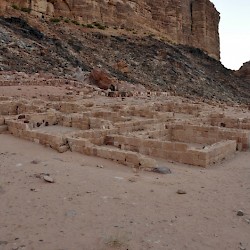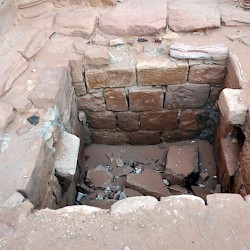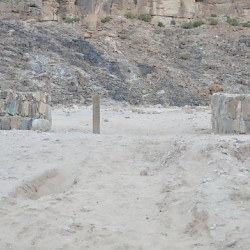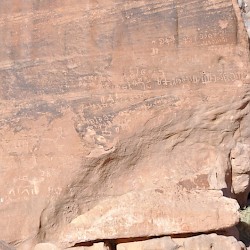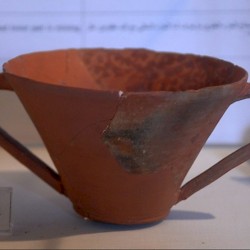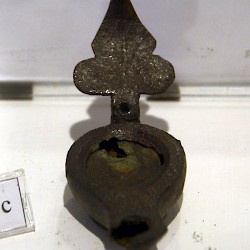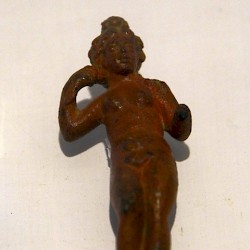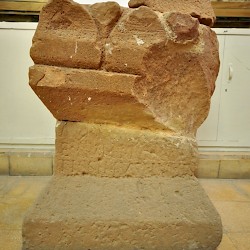Aramava (Wadi Rum)
Q40729Aramava: Nabataean town and sanctuary on the edge of the Wadi Rum desert.
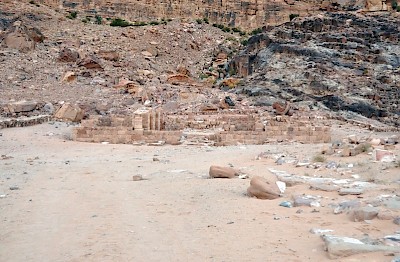
Aramava, mentioned by the Roman geographer Ptolemy of Alexandria,note is probably to be identified with the ancient remains near the modern village of Wadi Rum. Here, at the foot of the Jebel Rum, a Nabataean temple and several other structures have been excavated in the neighborhood of a well, the Ain esh-Shellaleh ("Lawrence's well").
The sanctuary was probably built in the first century CE. Originally, it was square enclosure with eighteen free-standing columns that surrounded a platform. In a second building phase, the spaces between the columns were closed by walls, covered with stucco and paint. In the final phase, this was surrounded by another wall with stairs to a roof.
The cult statue was a seated woman, probably the Arab goddess Allat ("Mrs God": the goddess of war and love, sometimes identified with Athena or Aphrodite). An inscription referring to the Roman emperors, plural, can be dated to the shared reign of Septimius Severus and Caracalla or Caracalla and Geta (i.e., the first years of the third century).
Behind the sanctuary, the "western complex" was found, probably a house from the second half of the first century CE, and to the east, the "eastern complex" was excavated. This was a bathhouse. The ancient well was 400 meters to the south. Several graffiti near the well, written in various Arabic dialects, prove that visitors came all the way from Yemen. This comes as no surprise, because Aramava must have been one of the stations along the Incense Route.
